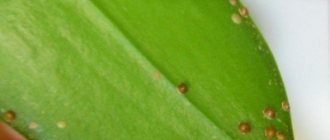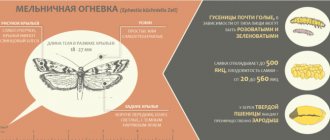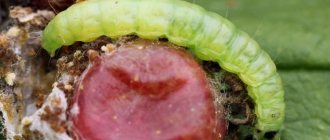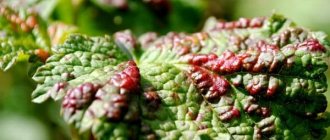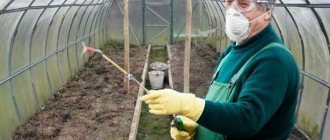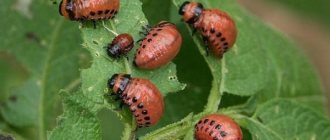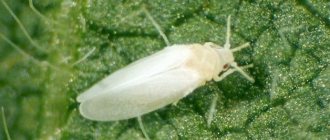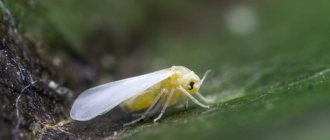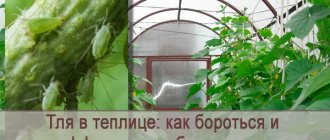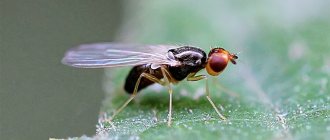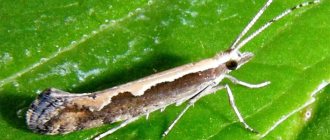Currants and gooseberries are the most common berry bushes in garden plots. They are undemanding in care and can produce a good harvest without making special requirements for watering and fertilizing. Diseases and pests can deprive a gardener of tasty berries. Currants are powerless against the invasion of the gooseberry moth. The larvae of this insect are very voracious; one caterpillar can destroy up to 15 currants. The gooseberry moth is widespread. This “berry eater” is one of the most dangerous pests of currants and must be combated.
Characteristics of the pest
The gooseberry moth is a species of moth from the butterfly family. A small gray-brown winged insect lays its eggs in the buds, flowers and ovaries of currants. One female can lay up to 100 eggs. After 10 days, caterpillars appear. Only one caterpillar remains in the berry; the rest crawl away in search of food. They feed on the contents of the berries, filling the insides of the fruit with waste from their vital activity. The berries first quickly acquire a ripe appearance, and then rot. Having destroyed one berry, the larva crawls to another, undamaged one. The caterpillars “grow fat” for about a month, and then rush to the ground to enter the pupal stage, overwinter, and fly out in the spring to give birth to a new generation of pests. The moths overwinter at a depth of 5–7 centimeters in the tree trunk circle closer to the center.
The summer lasts about a month. Its beginning coincides with the blooming of the inflorescences of early currant varieties. Late varieties (Dachnitsa, Sensei, Selechenskaya) are usually subject to massive attack by butterflies.
Description
The butterfly is grayish-beige in color and has a wingspan of about 3 cm. It lays white, oval-shaped eggs less than 1 mm in size. The mass emergence of butterflies coincides with the period of bud formation. The length of newborn caterpillars does not exceed 3 mm. They are yellow and white in color with a black head. The adult caterpillar is light green with a black head and black thoracic shield. Its length reaches 11 mm. This material will tell you about the leaf roller on currants.
All drugs against caterpillars are effective only in the early stages of its development.
The larvae, ready for pupation, descend along the web to the ground, go deeper into it and become covered with a dense gray cocoon. The pupae are located under fallen leaves or in the surface layer of the earth. A small number of caterpillars, about 10, manage to pupate.
Signs and symptoms of the lesion
It is not difficult to recognize traces of moth activity in a timely manner. Damaged berries become brightly colored unnaturally early. Their tops begin to rot. Subsequently, the disease spreads to the entire fruit and the berries fall off. Bunches of dried red berries, entwined with cobwebs, are clearly visible on the bushes. Read how to treat currants against diseases and pests here.
Consequences
In the central zone and in the northern regions, the moth poses a real threat to currant plantings. Under favorable conditions for the pest, you can lose almost the entire crop if you do not fight this insect. The number of the pest undergoes significant fluctuations in different years due to the massive death of pupae. In warm and humid months, they are affected by specific fungal diseases.
Signs of damage and damage caused
The gardener should be alert to the following signs:
- the appearance of cobwebs on the bushes; several berries can be entwined with cobwebs at once, among which there will be fresh, shriveled, and wilted ones;
- there is a noticeable hole on the berry, from which a web stretches to nearby fruits;
- upon careful examination of the berries, the culprit of the web on the currant is also noticeable - the green moth caterpillar;
- the appearance of dried fruits on the bushes, changes in the color of the berries.
The harmfulness of voracious insects can reach impressive proportions. Crop losses range from 50 to 90%.
Interesting! The larva of the black currant moth damages about 8-10 berries. On bushes with red, the damage is estimated at 15 berries, and on gooseberries you may be missing 2 to 6 fruits. And this is only harm from one individual!
What to do if currants are damaged, what measures to take. Methods of combating moth
ways to get rid of pests. If used correctly, the moth will not cause much damage to the crop. Depending on the season, they resort to different methods of control:
- Agrotechnical. From early spring to late autumn.
- Spraying with pesticides. In early spring before flowers bloom, in summer and autumn after harvest.
- Spraying with biological products. During the entire growing season.
- Traditional methods. During the growing season.
During flowering, it is advisable to avoid spraying.
How to get rid of a pest - agrotechnical measures
A weakened plant will suffer more from pest attacks. Some agricultural practices have a detrimental effect on the moth. In order for currants to develop normally, you need to follow the usual rules of agricultural technology when planting a bush and caring for it:
- do not thicken plantings;
- do not overfeed;
- remove fallen leaves from under the bush;
- trim shoots;
- protect from pests and diseases;
- loosen the soil in the tree trunk circle;
- Hill up and mulch the bush.
Digging the soil
Adult caterpillars descend to the surface of the earth. Having turned into pupae, they settle down in the surface layer of soil for the winter. If you dig up soil within a radius of up to 40 cm from the base of the bush in late autumn, the pupae that fall to the surface will freeze in winter. The currant root system is located close to the surface, so you need to dig carefully, not going deeper than 5 cm.
Hilling
The pupae overwinter close to the center of the bush. To prevent the moth from attacking the currants in the summer, it must be earthed up in the fall. This operation is carried out at the end of September - beginning of October, loosening the soil in the root circle and filling the base of the bush with a hill 8 - 10 centimeters high. It will be difficult for butterflies that hatch from pupae in the spring to get out from under a pile of earth. They won't be able to lay eggs.
Mulching
A layer of peat or compost 10 cm thick, laid out at the base of the bush within a radius of 40 cm, will also prevent butterflies from leaving their winter refuge. You can mulch the bush in early spring, as soon as the snow melts. The mulch is removed after the berries have ripened. A piece of roofing felt, tightly laid in a circle near the trunk, will serve as an insurmountable barrier for hatched butterflies. It is necessary to cover the space under the crown of the bush in early spring.
Disposal of affected parts of the bush
If there are few affected bushes, they are treated using the “mechanical method” - manual collection of damaged berries. Damaged fruits must be disposed of by scalding with boiling water. When performing this procedure, it is possible to protect other berries from the moth. Berries infested with the pest should be removed when the first signs of damage are detected. The caterpillar, having destroyed the pulp of one berry, moves to other fruits.
Trimming
A dense bush creates ideal conditions for the spread of the pest. Timely pruning will improve the bush's ventilation and illumination. When pruned annually, blackcurrant bushes produce larger berries.
Light traps
It is known that butterflies - “nighties” fly towards the light. In the store you can purchase special light traps to get rid of the moth. You can make such a trap yourself from an ordinary light bulb. It is placed under a transparent heat-resistant cap and connected to electricity. The cap is coated with honey or molasses. The moth butterfly, flying towards the light and a pleasant aroma, falls into a “sweet” trap.
Folk remedies
Gardeners have extensive experience using simple formulations of natural ingredients to protect against pests. In the fight against moths, they are used mainly because of their pungent odor to repel butterflies. Concentrated solutions and dusting powders irritate the delicate skin of caterpillars and inhibit their activity. The firefly is repelled by the smell of tar and turpentine. You can place jars with these liquids between the bushes. Spray the bushes in the morning and evening in windless, dry weather. It is advisable to repeat the treatment after 2 – 3 days. To repel butterflies, currants need to be processed in the evening. These “night bats” begin to show their activity at night.
Chamomile
The bushes begin to be treated with chamomile infusion from the beginning of flowering. For this, prepare an infusion:
- 100 g of dried flowers are poured into 10 liters of hot water.
- Leave for a couple of hours and filter.
Pyrethrum powder
Persian (Dalmatian) chamomile, pyrethrum, belongs to the aster family and is related to tansy. The powder from dried inflorescences contains a toxin that has a detrimental effect on the nervous system of the pest. It is used to pollinate currant bushes to combat caterpillars.
It is useful to plant tansy near the bushes, one flower for 5 - 6 bushes. The pest also does not like the smell of this plant.
Ash
An alkaline solution for spraying bushes is prepared from ash:
- Fill the bucket 1/3 with ash.
- Fill a bucket (10 l) with water.
- Leave for two days.
- Strain.
Mustard powder
Alkaloids and essential oils contained in mustard help fight pests. Solutions are prepared for spraying; treatment is done after flowering.
Recipe 1:
- 10 tbsp. spoons of mustard powder per 10 liters of water;
- leave for 48 hours.
Recipe 2:
- To prepare a base solution, leave 200 g of powder in 10 liters of water for 2 days.
- For the working solution, dilute 1 liter of “base” with 5 liters of water.
Recipe 3:
- Pour 100 g of powder into 10 liters of water and leave for 2 days;
- For the working solution, the infusion must be diluted with water in a ratio of 1:2.
For better adhesion, liquid soap should be added to the spray solution.
Wormwood tincture
The pungent smell of wormwood repels butterflies. The infusion is prepared as follows:
- 7 tbsp. Add 1 tablespoon of dry wormwood leaves to 1 liter of water.
- Leave for 1 hour.
- Strain and dilute the infusion with a bucket of water.
Spray the bushes with the working solution after flowering. Dried wormwood branches can be placed in the middle of the bush. You can prepare an infusion from fresh herbs. To do this, the leaves and flowering tops need to be placed in a bucket, filled with water and closed with a lid. The liquid must ferment, after 10 days it will be ready for use. The unpleasant odor that accompanies the fermentation process can be avoided by placing a sprig of mint in a bucket.
Tobacco tincture
Nicotine contained in tobacco kills caterpillars. A week after flowering, the ovaries can be sprayed with tobacco tincture:
- Pour 200 g of tobacco dust into a 3-liter jar.
- Pour boiling water over the contents until full and cover with a lid.
- Leave for two days.
Before spraying, you need to add liquid soap to the solution. Read about the use of tobacco dust in gardening at this link.
Pine concentrate
Moth moths do not like the smell of pine needles. At the beginning of flowering, the bushes can be sprayed with an infusion of pine branches:
- Fill the bucket 1/3 full with finely chopped pine branches.
- Pour boiling water over and leave for 2 days.
- Strain the infusion, add water to a volume of 10 liters.
You can use pine extract:
- Pour 200 g of pine or spruce needles into 2 liters of hot water.
- Leave for 7 days, stirring regularly.
- Strain.
- Before spraying, dilute with water (1:10).
The pharmacy sells pine concentrate in the form of powder and liquid extract. With its help it is easy to prepare a moth repellent liquid:
- 4 tbsp. Dilute spoons of concentrate in a bucket of water.
For better adhesion, soap is added to the working solution.
Vinegar
Vinegar vapors irritate the respiratory tract of caterpillars, and the vinegar solution “burns” their skin. When bushes are treated with vinegar, the caterpillars die. Spray after flowering. Preparation of the solution:
- Add 250 ml of table vinegar (9%) to a bucket of water.
Elder
Many pests do not like the strong, unique smell of elderberry, and the moth does not like it either. Elderberry sprigs in bottles placed among the branches of a currant bush will discourage butterflies from laying eggs. Elderberry bark contains organic acids, essential oils, phytosterols and other substances.
Decoctions are prepared from elderberry shoots and its flowers:
- Cut 5 – 6 branches into small pieces.
- Pour 15 liters of water and boil for an hour and a half.
- Cool.
To prepare the working solution, dilute 2 cups of broth with 10 liters of water.
You can prepare an infusion from fresh twigs and flowers:
- 300 g of crushed raw materials pour 10 liters of water;
- insist.
Elderberry infusions and decoctions are sprayed on bushes before flowering. Elderberry leaves have a pungent, unpleasant odor. It is stronger in red elderberry.
Chemicals
Chemical pest control agents can quickly get rid of moths. Unfortunately, this often causes harm to the plant itself and beneficial fauna. The use of pesticides is not recommended during the growing season. Modern pesticides of biological origin are less toxic. Their result is not so lightning fast, but toxic substances do not accumulate in the soil and in plant tissues. Pests have not become accustomed to these drugs. Biopesticides are not dangerous for bees and beneficial insects - predators and endophages. How to treat currants against aphids after flowering, read here.
The working solution is prepared immediately before use. Spraying is carried out in the morning and evening hours in dry weather, application rates for treating the bush:
- Chemical pesticides - 1.5 or 2 liters of solution.
- Biopesticides - from 2 to 5 liters of solution.
The solution prepared from biological products can be stored, but not more than a day.
It is enough to carry out one treatment with pesticides. If there is no rain, the effect after spraying lasts 2 weeks. Treatment with biopesticides is repeated several times until the larvae completely disappear with an interval of 7 days. The sprayer must be set to spray tiny drops of water. In this case, the plant will be as wet as possible.
Before flowering
If there is a massive invasion of the moth on a plantation, it is recommended to treat the bushes with any insecticide before flowering next season:
- Actellicom;
- Fofanon;
- The drug Inta-C-M.
The active ingredient of the drug Actellik, pirimiphos - methyl, enters the insect's body with food or through the respiratory tract. The pest dies very quickly, within two hours. The working solution is prepared at the rate of:
- 2 ml of the drug per 2 liters of water.
Fofanon Nova is an organophosphate insecticide with intestinal and fumigant action. The active substance is malathion, it has a paralyzing effect on the pest, as a result of which it dies within 24 hours. Breeding scheme:
- 3 ml per 10 liters of water.
The modern insecticide of contact and fumigant action Inta-Ts-M affects larvae and egg laying. It contains the pesticides malathion and cypermethrin. Usage diagram:
- 1 tablet per 10 liters of water.
After flowering
As soon as the first flowers begin to open, the currants need to be treated with biological products against caterpillars:
- Fitoverm;
- Lepidocide;
- Bitoxibacillin.
Fitoverm contains the active substance Aversectin C, which affects the pest through the skin and intestines. Once exposed to this toxin, the caterpillar will die within two days. The drug is diluted at the rate of:
- 1.5 ml per 1 liter.
Lepidocide is an insecticide that acts on the pest through its intestines. The drug is made from the bacterium Bacillus thuringiensis var. Kurstaki, it contains endotoxin, which causes paralysis of the caterpillar. Lepidocide is available in the form of an emulsion and in powder form; it is diluted at the rate of:
- 30 g per 10 liters of water.
Bitoxibacillin is made from spores and waste products of the bacterium Bacillus thuringiensis. Its effect on the caterpillar's body is similar to that of lepidocide. The drug is available in the form of a concentrate and in powder form. The solution is prepared at the rate of:
- 100 g per 10 liters of water.
During fruiting
During the ripening period, it is allowed to spray the bushes with biological products:
- Fitoverm;
- Lepidocide;
- Bitoxibacillin.
Spraying is carried out at intervals of 5 - 7 days. Treatment should be stopped 5 days before harvest. This link will tell you about phytoverm against aphids on currants.
The preparations Lepidocid and Bitoxibacillin, made using the bacterium Bacillus thuringiensis, have a specific unpleasant odor. After picking, the berries must be thoroughly rinsed with water.
Folk recipes with photos
If garden bushes are slightly damaged by a pest, it is better to treat them using folk remedies - they are the least harmless to plants. Most popular:
- Camomile tea. Pour 50 g of pharmaceutical chamomile into 5 liters of hot water, then cover the container with several layers of cloth and let it brew for 1-2 hours. Treat the plants with the resulting product during the flowering period after the butterflies have fled from their winter shelters.
- Wood ash. Fill a third of the container with wood ash and add water, then let it brew for 2-3 days. Filter the resulting infusion and dissolve laundry soap in it at the rate of 30-50 g per 8 liters of infusion. Treat the affected plants with the resulting product.
- Tincture of wormwood and tobacco. Leave 400 g of wormwood and tobacco dust in 10 liters of water for 2 days. The prepared infusion can be diluted with clean water and 30-50 g of laundry soap can be added to ensure better contact of the liquid with parts of the plant. Treat plants affected by insects with the product.
Prevention
Preventive measures to combat the moth should be carried out from early spring to late autumn:
- In the spring before flowering , mulch the tree trunk circle to prevent the pest from emerging from the ground.
- In the summer - preventive spraying to scare away butterflies, and cleaning "nests" - berries with pests, shrouded in cobwebs.
- Digging up the soil in autumn will prevent the pupating insect from surviving the winter, and hilling the bush will make it difficult for it to emerge into the wild.
- In dense plantings it is more difficult to control the pest. When planting, you need to leave at least 1 meter between bushes.
- Regular pruning is recommended.
Elderberry bushes planted near currant bushes will protect moths from neighboring areas from the invasion of butterflies.
Gallica
Gall midges are a type of small flying insects similar to mosquitoes. The affected area where the gall midge has settled on currants can be any part of the plant. Adults are 2 mm long and have a yellow-brown color. Initially white, as they develop the color of the caterpillars changes to red-orange, and at the last stage of growth it turns into red.
Swollen galls
There are three varieties of gall midge:
- Leafy ones that damage young leaves by eating and settling on them. A leaf damaged by leaf gall midges does not develop, curls and falls off. Young shrubby shoots are most susceptible to leaf gall midge invasions;
- Flower gall midges lay eggs in the ovaries of flowers, which leads to the death of the inflorescences, which acquire a spherical shape. Saturated larvae move from the bud to the soil;
- Stem gall midges select cracked fragments of the trunk of currant bushes for ovipositor. This happens at the end of the flowering stage. For nesting, the larvae choose a place under the bark, where huge colonies are formed. Fragments of bark inhabited by stem gall midges, as well as shoots, die.
While in the larval stage, each of the above representatives of the gall midge species overwinters in the upper layer of soil. Pupation of caterpillars begins with the onset of stable warming. With the transition of the bush to the flowering stage, mature individuals are activated.
Weevil
The bud weevil is a beetle with a gray color and belongs to the short-proboscis type. Representatives of these parasitic insects are characterized by a bisexual method of reproduction. Mature individuals eat the vegetative organs of buds and flowers. The place for laying eggs is located next to the currant planting. The development of bud weevil larvae occurs in fruits and stem tissues. Knowing how to prevent the appearance of weevils on currants and how to deal with this pest, you can prevent loss of yield.
All weevils are divided into two types:
- short-proboscis;
- long-proboscis.
leaf roller
The leaf roller is a 3-centimeter moth whose wings fold exactly horizontally. The larvae are yellow-green in color. The number of eggs laid at a time is about a hundred. The caterpillars are distinguished by a black head with rows of peculiar hooks on the sides of the body, which is devoid of hair. In addition to destroying leaves, leaf rollers also eat buds. The overwintering place for the currant leaf roller is leaves shrouded in cobwebs.
Currant varieties resistant to the pest
There are no currant varieties resistant to moth and scale insects. Bushes that have strong immunity to disease have a better chance of recovering faster after an encounter with a pest if they receive timely help.
The stability of currants depends on many factors:
- Genetic origin;
- Degree of adaptation to climatic conditions;
- Weather conditions during the growing season;
- Degrees of adaptation to diseases and pests.
In early warm spring, early varieties of currants suffer more from the moth. If spring is prolonged, harmful butterflies will lay more eggs in flowers of late varieties.
Table: Recommended blackcurrant varieties
| Name | According to ripening period | Berry weight, g | Taste rating, point |
| Pearl | early | 4 | 5 |
| Crane | average | 1,5 | 4 |
| Minay Shmyrev | average | 1 | 4,3 |
| Ant | average | 1,1 | 4 |
| Lazy person | late | 2 | 4,8 |
| Chereshneva | late | 3 | 4 |
To develop new resistant forms of red currant, hybrids obtained by crossing the varieties Chulkovskaya, Rote Spätlese, Maarsea Prominent, Jonker van Tets are used.
Table: Recommended varieties of red currants
| Name | According to ripening period | Berry weight, g | Taste rating, point |
| Gazelle | early | 0,5 | 3,5 |
| Alpha | average | 1,5 | 4,7 |
| Red Andreichenko | average | 0,7 | 4,2 |
| Dutch red | late | 1 | 3,5 |
| Gift of summer | late | 0,9 | 3,5 |
Brief description of the moth family
The moth belongs to the division of small lepidoptera of the butterfly family. There are more than 6 thousand species of these insects. Some tropical representatives of moths reach sizes of up to 8.5 cm, but most have insignificant parameters.
Their front wings are triangular in shape, while their hind wings are more rounded and much larger. The colors of butterflies are varied and bright. Insects are active at night. Caterpillars live in grasses, causing significant damage to plantings.
conclusions
- Moth and glass beetle are one of the most dangerous pests of currants. The pest needs to be controlled from early spring to late autumn.
- As soon as the snow melts, you can put a piece of roofing felt under the bush to prevent the butterflies from flying out.
- In the spring, spraying solutions prepared according to folk recipes will help scare off butterflies.
- In the summer, you need to carefully inspect the bushes and pick off all suspicious bunches of berries. They need to be scalded with boiling water.
- During the ripening period, to combat caterpillars, it is allowed to spray the bush with biological products. After picking the berries, pesticides can be used for treatment.
- In late autumn, you need to hill the bush to a height of 10 cm to make it difficult for butterflies to emerge from the ground.
- Elderberry bushes planted near currants will repel the moth from it.
Why is it dangerous?
In addition to black and red currants, the moth attacks gooseberries and occasionally raspberries.
If effective measures are not taken in time, the pest can eat almost all the fruits. Thus, during periods of population explosion, insects can destroy up to 90% of the crop, causing irreparable damage to farmers. According to experts, one caterpillar can easily eat 10 currants and 6 gooseberries, and a small family can completely gnaw off an entire bush. The caterpillars very quickly attack the plantings and literally devour the berries from the inside, leaving the products of their vital activity in their cavity. Pests entangle currant leaves in a thick and sticky web, penetrate inside the fruit and eat away the pulp.
Morphology
Imago. A butterfly with a wingspan of 24–36 mm.
Like all members of the genus Zophodia, the insect's forehead is slightly convex, and the protruding scales covering it form a distinct cone; The antennae of both sexes are thread-like and short-ciliated.
The forewings of the gooseberry moth are brownish-gray or dark gray in color with a wide white oval stripe along the costal margin. The inner band has a slightly curved shape and is bordered by a wide black stripe. The outer band is serrated. The discal spot is double, blackish. In addition, the line closest to the base of the wing is located at a distance of a quarter of the length of the costal margin. The hind wings are light, brownish-gray, with a dark edge.
Sexual dimorphism:
Male. Like all representatives of the genus Zophodia, the first segment of the flagellum has a tuft of scales arranged in a fan; labial palps rather long, filiform; the proboscis is well developed. The structure of the male genitalia is like that of all representatives of this genus: the uncus is rounded at the apex, the gnathus is paired, pointed at the apex, the valvae are large, there are no processes, the aedeagus is cylindrical, and there are no cornuti.
Female. The female genitalia, like all representatives of the genus Zophodia, are represented by a rather short ovipositor, membranous, unsculpted copulatory bursa and its duct and cup-shaped signum.
Larva (caterpillar). Length – 8–14 mm. The head is black. The color of the body is greenish-gray. On the sides of the second segment there are shiny black ring-shaped spots.
Preventive actions
Knowledge of the characteristics of their life cycle and natural factors will help gardeners destroy moths. Thus, in the summer heat, moth caterpillars do not have time to burrow into the upper layers of the soil and die. The air temperature does not depend on the person, but some other measures can be taken to protect currants from the pest.
Regular walking around and checking the bushes will help you notice signs of insects in time, as well as destroy caterpillars and fruits damaged by them. Timely cleaning of bushes will protect plantings from attack by pests. It is recommended to check other crops growing in the same area. Raspberry and gooseberry bushes are very popular with the moth and can provoke the spread of the pest and its appearance on currants.
Chemicals
If you have already used all the traditional methods against the gooseberry moth, but they did not produce any results, you will have to use more effective, but not very safe, chemical preparations for treatment. “Etafos”, “Actellik” and “Karbofos” have a strong effect on insect pests
" Thanks to treatment with these pesticides, the plants will be protected not only from the moth, but also from a fungal disease called anthracnose. It is characterized by the appearance of dark spots on the leaves of currants and gooseberries, which merge over time and spoil the berry crops. As a result, the bushes may become completely bare and the harvest will be significantly smaller.
It is important to remember that the branches of the plant are sprayed with a chemical solution only when it has finished flowering. If this year you find a lot of moths on the bushes, then next year it is recommended to treat the bushes before they bloom
There are many more effective chemical pesticides, among which the following are especially popular:
- 12% dust solution.
They are used to process the branches of all bushes. A week later, undiluted dry dust powder (about 50 g) is scattered near the bushes. - Hexachlorane
. This substance is used to treat the soil under and near plants. It kills moths crawling near plants and scares away new ones. - Preparations “Kinmiks”, “Iskra”, “Gardona”, “Karate”
. They are sprayed on plants during the formation of buds on them. This poison effectively kills the gooseberry moth at whatever stage of development it is. - Biological agents “Bitoxibacillin”, “Gomelin”, “Agravertin ”
. Bushes are treated with these preparations after flowering has completed.
Remember that from the start of processing to the start of harvesting, a time interval of 28-30 days must be maintained. You should also know that chemicals should be used only in extreme cases, when all folk remedies have been tried and have not yielded results. The effect of pesticides on soil, other insects and the plants themselves has not yet been fully studied. When carcinogens get into the ground or come into contact with birds, bees and other insects, their mass death can occur.
Biological drug Fitoverm
A product based on aversectin C, produced in ampoules of 2.4, 5 ml, or bottles of 20 ml. Has a prolonged action. The poisoned insect dies 4-5 days after spraying.
The treatment is carried out in dry, clear weather. During the dry period, the drug remains effective from a week to three. When dew or rain occurs, spraying must be repeated. During the flowering period, Fitoverm is prohibited for use. The berries are edible after 5 days from the date of treatment, since the active components of the drug provoke poisoning.
A test must be carried out before any planned combination treatment. Fitoverm is mixed with other drugs and the appearance of sediment is monitored. When this occurs, chemical combinations are prohibited.
To prepare the solution, use 5 ml of Fitoverm per 600 ml of water with a neutral pH. Liquid consumption is 10 l/100 m2. The treatment is carried out in a special suit with protection of the respiratory tract, mucous membranes and skin. Repeated spraying is carried out after 20 days.
Fufanon with fast-acting effect
Organophosphorus emulsion, produced in 10 ml bottles and 5 ml ampoules. The main component of the drug is melation. Has a fast-acting effect. When contacted with aphids, it causes complete paralysis after 2 hours of action and death after 24 hours.
FufanonBefore treating currants with this product, it is necessary to wait at least 15 days from the date of the last feeding. It is completely incompatible with other chemicals. To prepare an aqueous solution, use 5 ml of the substance and 5 liters of clean water. Spray currants on a cloudy day in the early morning or at sunset. The duration of action does not exceed 4-7 days; after the specified time period, the bushes must be sprayed again.
Acrophyte in the fight against aphids
Acrofit is a concentrated solution of aversectin C with paralytic action. Sold in 40, 200 and 900 ml packaging, as well as in 4.8 liter bottles. When caught on the body of an aphid, it causes instant paralysis. The infected insect dies within 48 hours after treatment. The drug is resistant to precipitation and remains in the plant for 2-3 weeks. Pests drinking the juice of treated currants die out after 2-3 days. Acrofit is not addictive.
The optimal time for spraying is dry, windless weather at a temperature of +20 °C. For spraying, 8 ml of the substance is diluted in 1 liter of water. Bushes and berries are treated with the prepared solution. The fruits are edible after 2-3 days. Repeated spraying is carried out after 2 weeks. The solution is not suitable for storage; the active substance avesectin decomposes in water.
